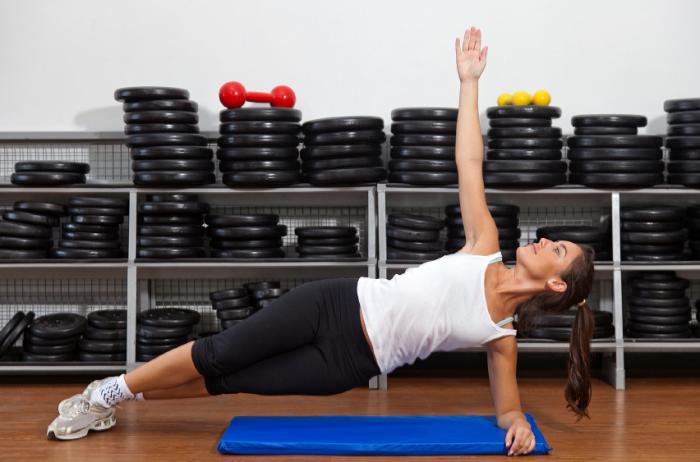
Patients with scoliosis who did the side plank yoga pose for 90 seconds a day saw significant improvement in spine curvature.
The researchers, at the Columbia University College of Physicians and Surgeons in New York, NY, publish their findings in the journal Global Advances in Health and Medicine.
Scoliosis - a condition in which the spine curves to the side - affects around 6 million people in the USA and is accountable for more than 600,000 doctor visits each year.
Although scoliosis can affect all age groups, onset is most common between the ages of 10-15.
Severe scoliosis - defined as a spine curvature of more than 45 degrees - is usually treated with surgery. There are non-surgery techniques available for patients with spine curvatures less than 45 degrees - one of the most common being bracing.
Each year, around 30,000 children and adolescents with scoliosis are fitted with a brace that is worn for around 23 hours a day, helping to straighten the childen's spines as they grow.
The researchers note that a popular bracing method - most commonly used in adolescent girls - requires patients to attend 40 2-hour sessions, three times a week for 3-4 months. The patients are then urged to carry out lifelong exercises for 30 minutes a day.
Since many scoliosis patients are adolescent girls, the unwieldy bracing and lengthy exercising is socially awkward, emotionally painful and physically difficult. And yet untreated scoliosis can progress at 7% per year, and result in disability and life-threatening health risks.
Patients required to perform the side plank on weaker side of spine
In their study, Dr. Fishman and colleagues set out to determine the effectiveness of one basic yoga pose - known as the side plank - on 25 participants aged 14-85 with idiopathic scoliosis.
The side plank involves lying on one side of the body with straight knees, and propping up the upper body with the elbow and forearm.
After undergoing an initial examination, an X-ray and an evaluation by a radiologist, patients were shown how to carry out the yoga pose.
In the first week, they were instructed to do the pose on the side their spine was curved toward for 10-20 seconds each day. They were then asked to do the pose once daily for as long as possible, still on the side of their spine curvature.
Explaining the reasons behind asking the patients to do the pose on the side of their curvature, the research team says:
"Since scoliosis is an asymmetrical condition, I have treated it asymmetrically, asking patients to do the pose on the weaker side only. That strengthens the specific spinal muscles on the convex side that are needed to help with curve reduction."
The research team adds that the National Scoliosis Foundation recommend that individuals with scoliosis perform 25 yoga poses to help with their spine curvature. However, they point out that no clinical results support the effectiveness of this, and patients are not advised to perform these poses asymmetrically.
Patients' spine curvatures were measured at the beginning and end of the study using the standard Cobb angle technique, and X-rays were taken again once the study ceased.
Yoga pose improved spine curvature by around 32% among all patients
On average, participants did the side plank pose for 1.5 minutes a day, 6.1 days a week for 6.8 months.
The researchers found that spine curvature improved by around 32% over all patients. Among 19 patients who did the yoga pose for at least 3 days a week, spine curvature improved by 40.9%. Of these patients, adolescents saw a 49.6% improvement in curvature, while adults saw a 38.4% improvement.
Commenting on the findings, the researchers say:
"Asymmetrically strengthening the convex side of the primary curve with daily practice of the side plank pose held for as long as possible for an average of 6.8 months significantly reduced the angle of primary scoliotic curves. These results warrant further testing."
Numerous studies have hailed the benefits of yoga for other health problems. Earlier this year, another team of researchers reported on a study that suggested yoga could reduce the risk of anxiety and depression in expectant mothers, while a 2013 study claimed yoga could help lower blood pressure.
No comments:
Post a Comment